Nirvana’s 1991 grunge landmark “Smells Like Teen Spirit” inspired untold numbers of loud, gravel-voiced anthems about youthful angst and rebellion. Perhaps the most surprising came from a hardcore hip-hop foursome based in Queens, N.Y.
“We’re like the hip-hop Nirvana,” Fredro Starr, de facto leader of Onyx, proclaimed nearly three decades after his group’s grunge-influenced “Slam” topped Billboard’s Hot Rap Singles chart. “We got that kind of music that makes motherfuckers want to bang their fucking heads on the wall.”
Before “Slam,” banging one’s head — against a wall or otherwise — was a practice relegated largely to young white men on the metal and alternative rock scenes. Yet “Smells Like Teen Spirit” was so ubiquitous that “the hood was fucking with it,” Fredro told VladTV in 2018. “I’m like ‘Yo, what if we bring this energy to hip-hop?’”
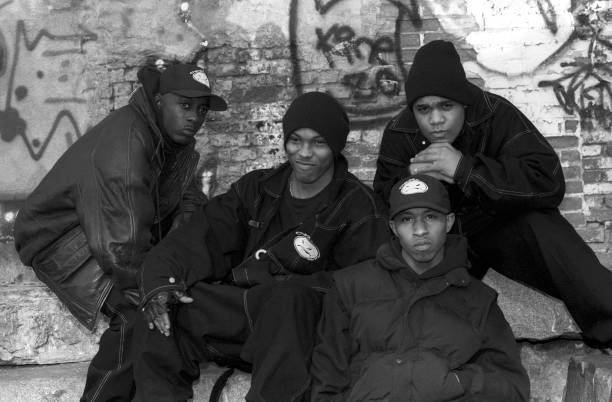
Onyx and Nirvana had more in common than might be obvious at first glance. Both were noisy and angry: Onyx’s members snarled their way through their 1993 debut album Bacdafucup (i.e., “Back the Fuck Up”), and sneered their way through music videos. Nirvana’s signature logo was a happy face, and Onyx adopted “Da Mad Face.” Nirvana was grunge, and Onyx was “grimy,” so named for their “lowdown, gritty” vocal delivery — “the raspy-rasp fashion,” as the group’s Sonny Seeza calls it on “Slam.” But in contrast to Nirvana’s “Oh well, whatever, nevermind” attitude, Onyx was combative, exorcizing its demons by looking you in the eye and “hit(ting) you in the face.” And while Nirvana eschewed corporate success, Onyx was determined to blow up.
Fredro (born Fred Lee Scruggs Jr.) and schoolmates Tyrone Taylor (the aforementioned Sonny Seeza) and Marlon G. Fletcher (a.k.a. Big DS) formed Onyx in Queens’ South Jamaica neighborhood in 1988. A year later, manager Jeffrey Harris landed the group a deal with Profile Records, which issued their debut single “Ah, and We Do It Like This” to little notice.
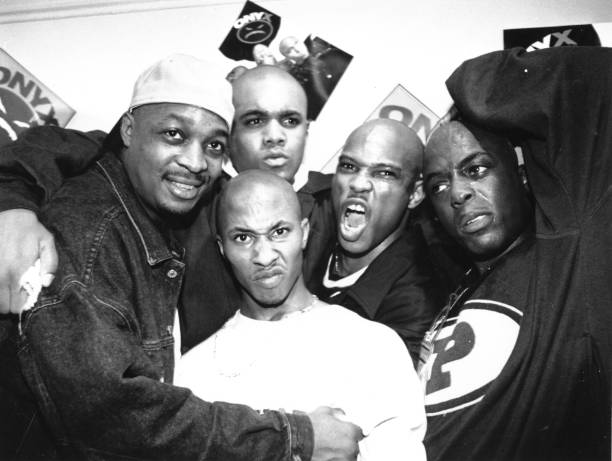
A fateful encounter in gridlocked traffic outside the 1991 Jones Beach GreekFest Festival brought Onyx face to face with none other than Jam Master Jay, the celebrated DJ behind Run-DMC, whose 1986 cover of Aerosmith’s “Walk This Way” pioneered the fusion of rap and rock and in the process introduced hip-hop into the mainstream. “Jam Master Jay was the godfather of hip-hop,” Fredro told Talib Kweli in an interview for UPROXX. “And he godfathered us in,” added Fredro’s younger cousin Kirk Jones, who joined Onyx at Jay’s insistence.
Jones was a self-described “comic book nerd” who, like Fredro, made his living as a barber. He had attended Manhattan’s Graphic Communications and Arts High School, an institution for “artistic hoodlums” where his classmates included members of notorious street gangs like the Decepticons and Lo Life as well as petty thieves known as “stick-up kids.” When Jay requested some Onyx demos, Big DS and Sonny Seeza were stranded out of state, so Fredro brought in Jones (who at the time went by the name Trop) to record a song called “Stik ’N Muve.” Where latter-day Onyx recordings like All We Got Iz Us and Shut ‘Em Down would favor a bleak and aggressive approach, “Stik ’N Muve” spotlighted the group’s exaggerated, cartoonish side, casting Fredro and Jones as stick-up kids — “Give me the money/Give me the money!” — named Mickey Billy and Sticky Fingaz. (The cousins alternated between the music and acting worlds throughout their careers: when not in the studio recording Bacdafucup, both filmed supporting roles in actor-turned-director Forest Whitaker’s cult classic Strapped.)
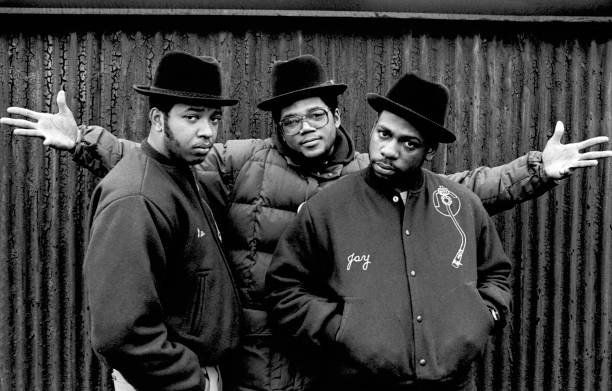
Jam Master Jay went crazy for “Stik ’N Muve,” which set the tone for Bacdafucup and inspired its darkly humorous skits. Jones was added to the Onyx lineup on a full-time basis, retaining the alias “Sticky Fingaz” and anchoring many of the group’s songs.
“Throw Ya Gunz,” the first single from Bacdafucup, appeared in late 1992, but Jay continued tinkering with the LP ahead of its March 1993 release. “The album wasn’t finished until we had ‘Slam,’” Fredro explained to DJVlad. “Jay was like ‘We need something to hit the radio,’ because all this shit was kind of hard [and] for the streets and shit. So [Bacdafucup co-producer] Chyskillz came with some happy-ass beat, and I was like ‘Yo, what the fuck is that shit?’ We didn’t like it. Jay was like ‘This is it, right here. This is it.’”
The “Slam” melody derives from the 1967 recording “The Champ” by the Mohawks, a group of session musicians assembled by British library music composer and performer Alan Hawkshaw. “The Champ” is an instrumental interpretation of Otis Redding and Carla Thomas’ version of “Tramp,” a funk-studded blues song originally co-written and performed by guitarist Lowell Fulson; Onyx’s vocals imitate the Mohawks’ organ riff (dum-dadum), but where Hawkshaw’s crew yelled “Champ!,” Onyx punctuates its version with shouts of “Slam!” and commands an army of b-boys (young, male hip-hop devotees) to get rowdy, go crazy and “make noise.”
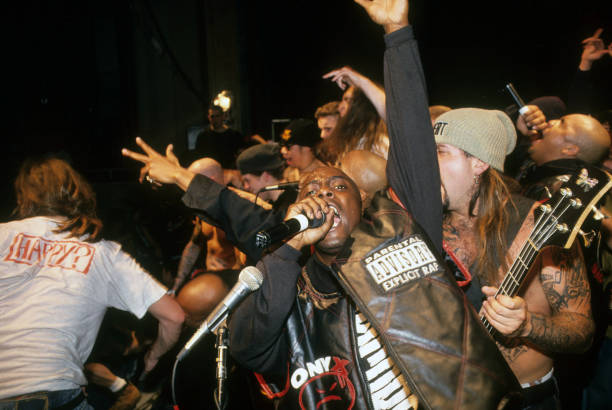
Nirvana was on heavy rotation in the background while Onyx struggled to complete “Slam.” (“In seven days, God created the heavens and the earth. It took us seven days to come up with the rhythm and the verse,” Sticky recalled.) The MTV blockbuster “Smells Like Teen Spirit,” which ushered slam dancing/moshing into the popular consciousness, would prove the instigating element that sent “Slam” over the edge. “We came up with the whole ‘Slam’ concept first, watching ‘Smells Like Teen Spirit,’” Starr told DJVlad. “And then it progressed into the melody… once we got the chorus, the rhymes was just always [about] being competitive.”
Though he may have been the last to join Onyx –– and the last to take up a verse, behind Fredro and Sonny –– “Slam” is Sticky Fingaz’s song. His lines are the most memorable (“B-b-but wait, it gets worse!/I’m not watered down, so I’m dying of thirst!”), the noisiest and the most aggressive, but also the sleekest and most rhythmic, making the most of the melody the group originally deemed “too soft.”
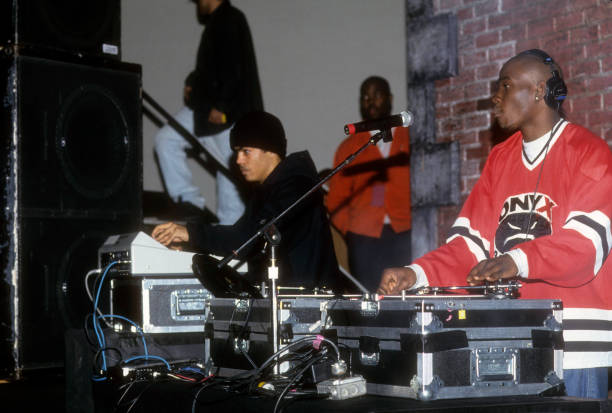
“Slam” was released as a single on May 11, 1993, close to halfway through what Vibe magazine declared “the year that hip-hop conquered the world.” At the time, the genre offered everything from the jazz-tinged groove of Digable Planets’ “Rebirth of Slick (Cool Like Dat)” to Dr. Dre’s game-changing solo debut The Chronic, not to mention Beck’s kitchen-sink alternative take, “Loser.” Before 1993, the few rap songs that managed to make it through the gates of pop radio were pop-leaning hits like “U Can’t Touch This” by MC Hammer and “Ice Ice Baby” by Vanilla Ice; by the time Bacdafucup reached radio and retail, however, the clamor of the youth market — particularly Latinos, who were instrumental in creating the dance-oriented “b-boy” culture that “Slam” shouts out —- was too loud to ignore.
“Had ‘Slam’ come along in ’91, I don’t know… I’m skeptical that we would have played it,” Rick Cummings, then the program director at Los Angeles pop radio station Power 106, told NPR. “But by 1993, it was like ‘Yeah, this is great.’”
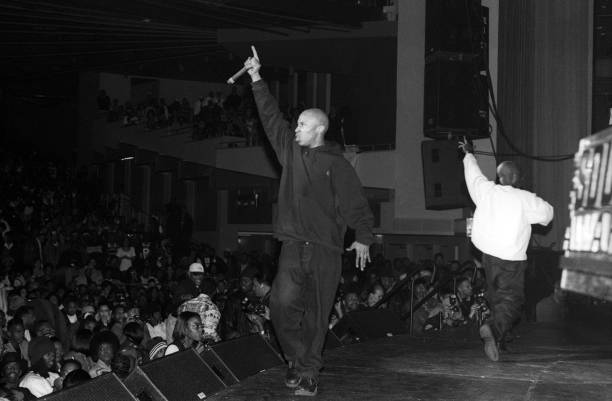
“Slam” was also among the first rap videos to gain marquee status on MTV. The clip memorably features a legion of b-boys jumping, stage diving and slamming into each other, all of them sporting the same sleek bald heads favored by Onyx themselves — a “militant, rebellious” look that would remain the group’s signature. The Source even credits the “Slam” video for introducing slam dancing to hip-hop.
“I feel like 1993 was the year that the rap artists in particular started really moving into our heavy rotation,” Patti Galuzzi, MTV’s director of music programming at the time, recalled to NPR. “Onyx felt like it was smack in the middle of the sort of thing we could play. There was nothing about the lyrics that was misogynistic or violent.”
“Slam” ultimately crossed over to number four on the Billboard Hot 100 chart, and sold about five million copies. “Let me just be clear: Onyx changed the sound of hip-hop,” rapper and broadcaster N.O.R.E. told Drink Champs in 2020. “I remember as a kid in Queens, [it was] about being smooth. [Onyx] came and had fun, but [they] were wild as fuck. When I [saw] ‘Slam,’ that was the first time [since ‘Walk This Way’] that I’d seen white people fully embrace hip-hop culture.”
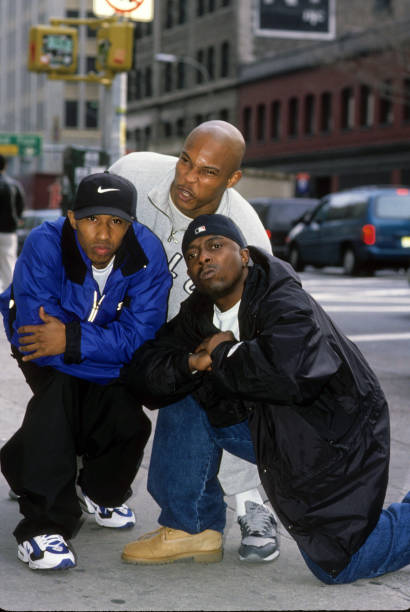
Onyx went on to launch its own label, Armee Records, and in 1995, the group inspired its own Marvel Comics one-shot, Onyx: Fight! Big DS left Onyx for a solo career and passed away in 2003, and Sonny Seeza dropped out of sight six years later. (“Sonny never left the group. He just don’t wanna come to work, man,” Fredro told Talib Kweli.) As of this writing, Fredro Starr and Sticky Fingaz continue performing live and recording under the Onyx name, releasing Blood on da X in 2023.
“We brought the energy to hip-hop,” Fredro told IAmHipHop the previous year. “When ‘Slam’ comes on [at a party], that shuts everything down. It’s over.”






